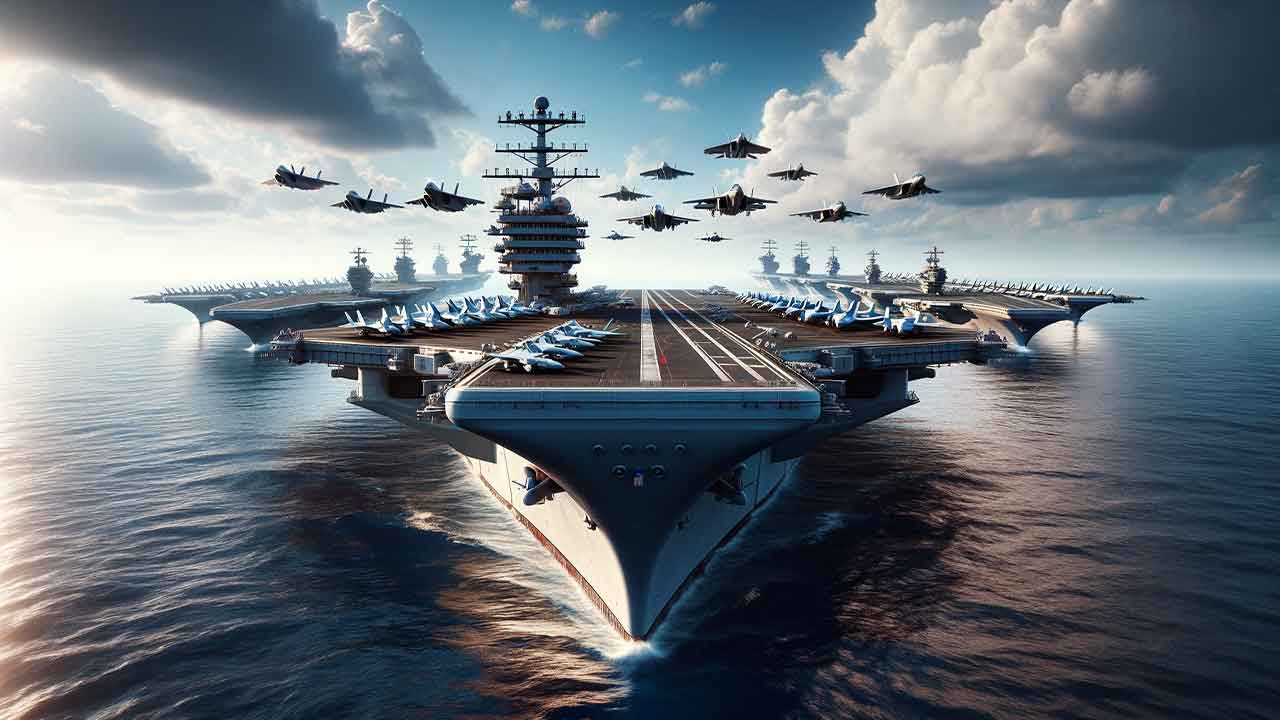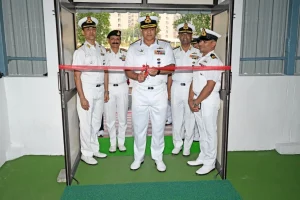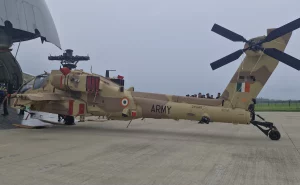The world’s oceans have long been the stage for the grand display of naval might, and at the heart of this maritime theater stand the towering titans known as aircraft carriers. These floating fortresses, capable of projecting air power across vast expanses, have become the centerpiece of modern naval warfare, serving as the mobile bases from which nations can launch and recover their aerial assets. As conflicts and geopolitical tensions continue to shape the global landscape, the demand for these formidable warships has only grown, with nations vying to bolster their naval supremacy.
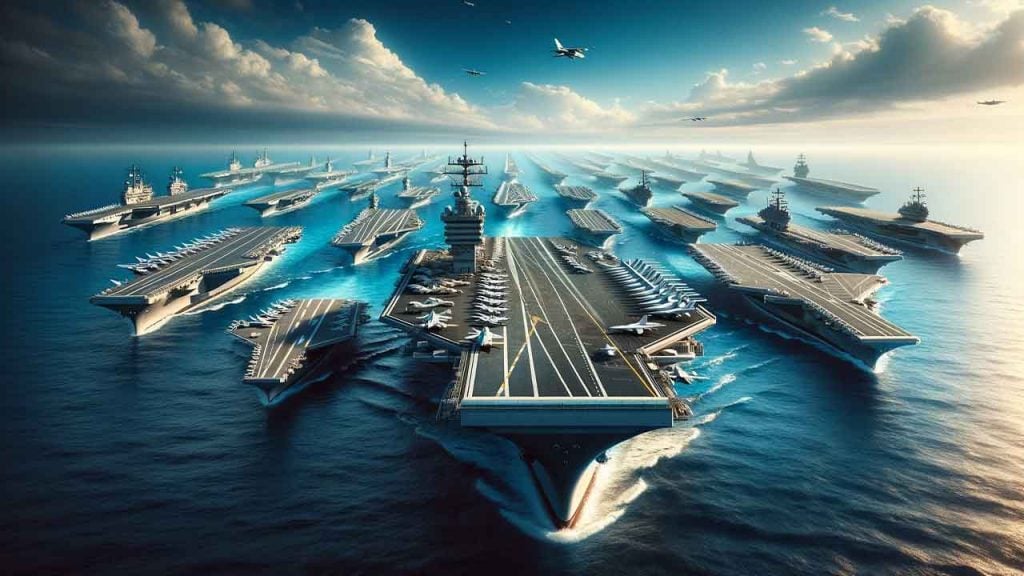
In this comprehensive exploration, we delve into the realm of the biggest aircraft carriers in the world, uncovering their impressive capabilities, technological advancements, and the strategic significance they hold for the nations that possess them. From the nuclear-powered behemoths of the United States to the emerging contenders from Asia and Europe, we will traverse the vast oceans, examining the engineering marvels that have redefined the boundaries of naval power.
The Evolution of Aircraft Carriers
The history of aircraft carriers dates back to the early 20th century, when the concept of launching and recovering aircraft from the decks of ships was first explored. In 1910, American pilot Eugene Ely made the pioneering flight from the deck of a cruiser in Virginia, and a year later, he successfully landed on a battleship in San Francisco Bay. These early experiments laid the foundation for the development of dedicated aircraft carriers, which would go on to play a pivotal role in the conflicts of the 20th century.
Top 10 Countries With Most Powerful Military Forces in the World 2024
The British Royal Navy’s HMS Argus, developed during World War I, and the USS Langley, the first carrier to join the US Navy in 1922, marked significant milestones in the evolution of these maritime giants. However, it was not until the attack on Pearl Harbor in 1941 that aircraft carriers truly cemented their status as the most potent platforms in naval warfare.
The Rise of the Nuclear-Powered Behemoths
The post-World War II era witnessed a dramatic transformation in aircraft carrier design and capabilities. Driven by the need to project power across greater distances and accommodate the increasing size and weight of modern aircraft, naval powers began to develop larger and more technologically advanced carriers.
5 Top Fighter Aircraft of U.S. Air Force
The emergence of nuclear propulsion systems marked a significant turning point, enabling carriers to operate for extended periods without the need for refueling. The United States, as the world’s preeminent naval power, led the charge with the development of the iconic Nimitz-class carriers, which displaced over 97,000 tons and could accommodate more than 60 aircraft.
As the Nimitz-class carriers reached the end of their service life, the US Navy sought to push the boundaries even further. The result was the Gerald R. Ford-class, the current generation of American aircraft carriers, which boast even greater displacement, enhanced air operations capabilities, and a host of technological advancements that redefine the concept of naval supremacy.
The Biggest Aircraft Carriers in the World
1. Gerald R. Ford-class, United States
Topping the list of the biggest aircraft carriers in the world is the Gerald R. Ford-class, a next-generation warship developed by the United States Navy. With a full-load displacement of an astounding 100,000 tons, these nuclear-powered behemoths are the largest aircraft carriers ever constructed.
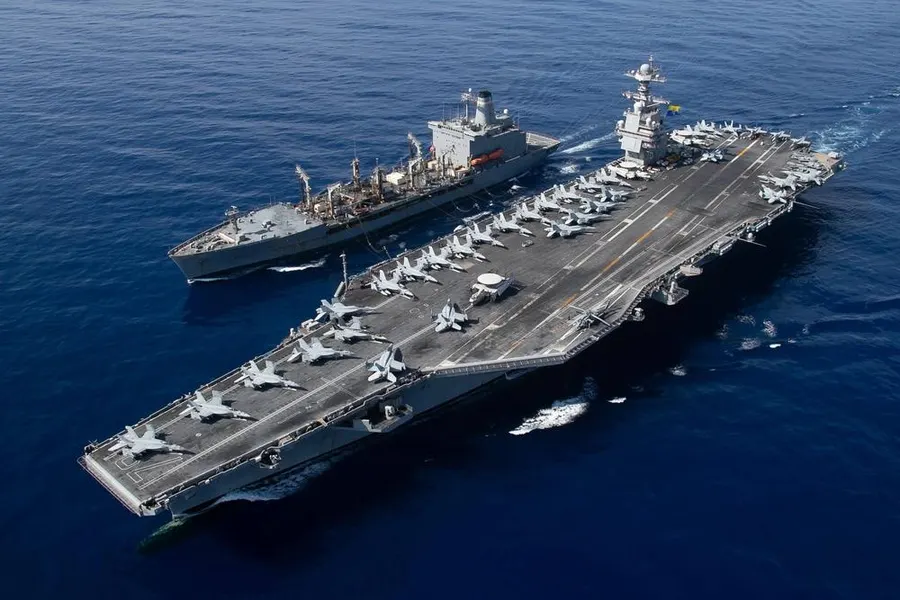
The first vessel in the class, USS Gerald R. Ford (CVN 78), was delivered to the US Navy in May 2017 and entered service in July of the same year. Equipped with an electromagnetic aircraft launch system and advanced arresting gear, the Gerald R. Ford-class can accommodate more than 75 aircraft and a crew of 4,539 personnel, including the ship’s company, air wing, and support staff.
Powered by two A1B nuclear reactors, the Gerald R. Ford-class offers a remarkable 250% increase in electrical capacity compared to the preceding Nimitz-class carriers. These vessels also boast an array of cutting-edge weaponry, including RIM-162 Evolved Sea Sparrow missiles, Rolling Airframe Missiles (RAMs), and the Phalanx close-in weapon system (CIWS).
10 Facts About US Navy SEALs You Should Know
2. Nimitz-class, United States
Closely following the Gerald R. Ford-class is the Nimitz-class, the world’s second-largest aircraft carriers. With a full-load displacement of 97,000 tons, these nuclear-powered supercarriers have been the backbone of the US Navy’s fleet since the 1970s.
The first Nimitz-class carrier, USS Nimitz (CVN 68), was deployed in May 1975, while the tenth and final ship in the class, USS George H.W. Bush (CVN 77), was commissioned in January 2009. Each Nimitz-class carrier is designed to operate for approximately 50 years, with a mid-life overhaul ensuring their continued service.
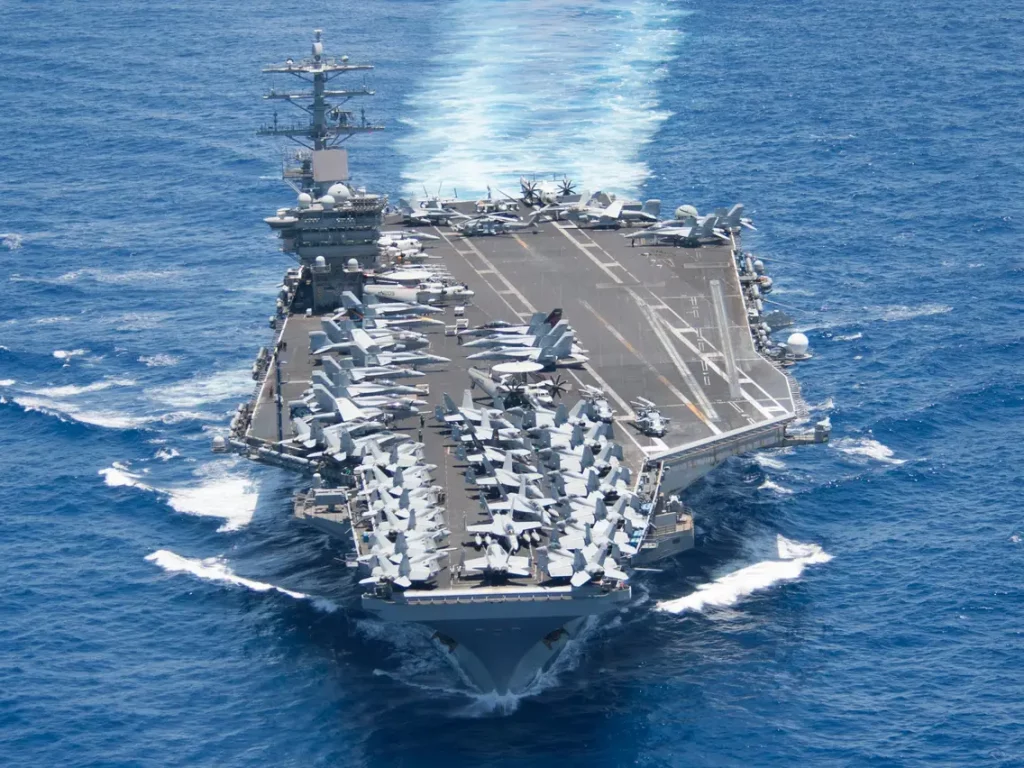
Measuring 332.8 meters in length, the Nimitz-class features a 4.5-acre flight deck capable of hosting more than 60 aircraft. These towering vessels can accommodate a crew of 3,000 to 3,200, along with 1,500 air wing personnel and 500 other crew members.
Powered by two nuclear reactors, the Nimitz-class can reach speeds of more than 30 knots. They are armed with Sea Sparrow missiles, Phalanx CIWS, and Rolling Airframe Missiles (RAMs) to defend against potential threats. As the Gerald R. Ford-class carriers enter service, the Nimitz-class will be gradually phased out and replaced by their more advanced successors.
3. Queen Elizabeth-class, United Kingdom
Crossing the Atlantic, we find the United Kingdom’s formidable Queen Elizabeth-class aircraft carriers, the biggest warships ever built for the Royal Navy. Displacing 65,000 tons, these impressive vessels represent a significant leap in the UK’s naval capabilities.
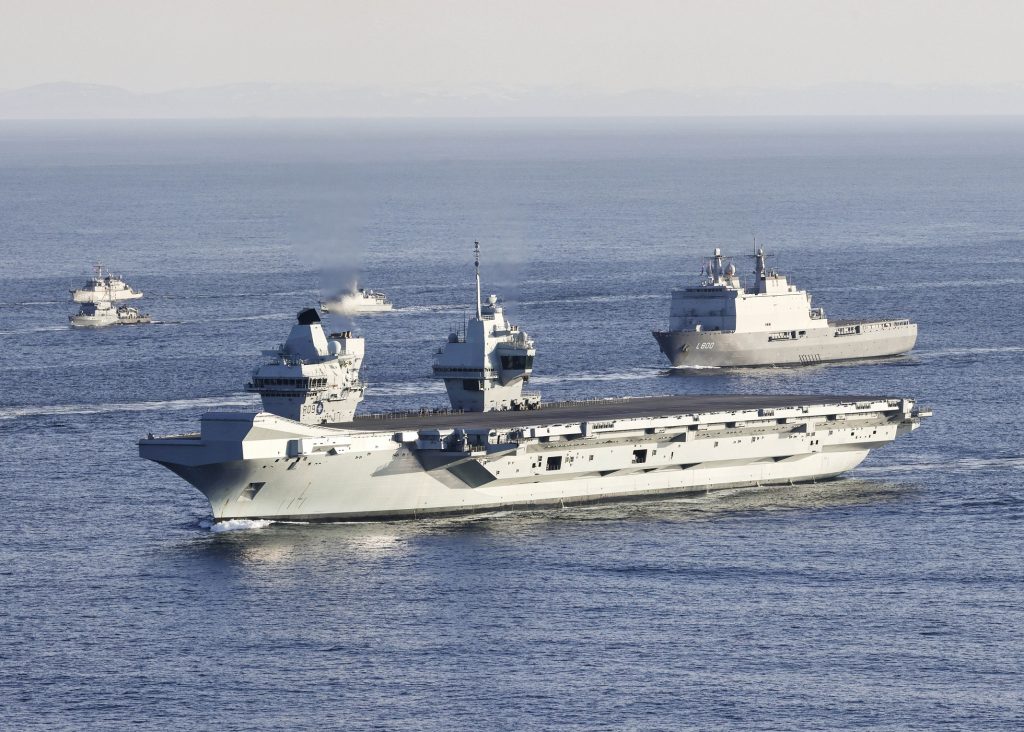
The first ship in the class, HMS Queen Elizabeth, began her sea trials in June 2017 and was commissioned in December of the same year. The second carrier, HMS Prince of Wales, followed suit and was commissioned in December 2019. Both vessels have already demonstrated their operational prowess, with HMS Queen Elizabeth completing a seven-month maiden deployment as the flagship of Carrier Strike Group 21 (CSG21) in 2021.
Top 20 Elite US Military Special Forces and Their Roles
The Queen Elizabeth-class carriers are three times larger than the previous Invincible-class and can support the embarkation of up to 40 rotary and fixed-wing aircraft. Equipped with the latest technology and automated systems, these carriers can operate with a streamlined crew of just 679 personnel.
Powered by two Rolls-Royce MT30 gas turbines and four diesel generator sets, the Queen Elizabeth-class can achieve a maximum speed of 25 knots. They are armed with Phalanx CIWS, 30mm guns, and mini-guns to defend against asymmetric threats.
4. Admiral Kuznetsov, Russian Federation
Shifting our gaze eastward, we find the Admiral Kuznetsov, the sole operational aircraft carrier in the Russian Navy. Ranking as the fourth-largest aircraft carrier in the world, this formidable vessel has a full-load displacement of 58,500 tons.
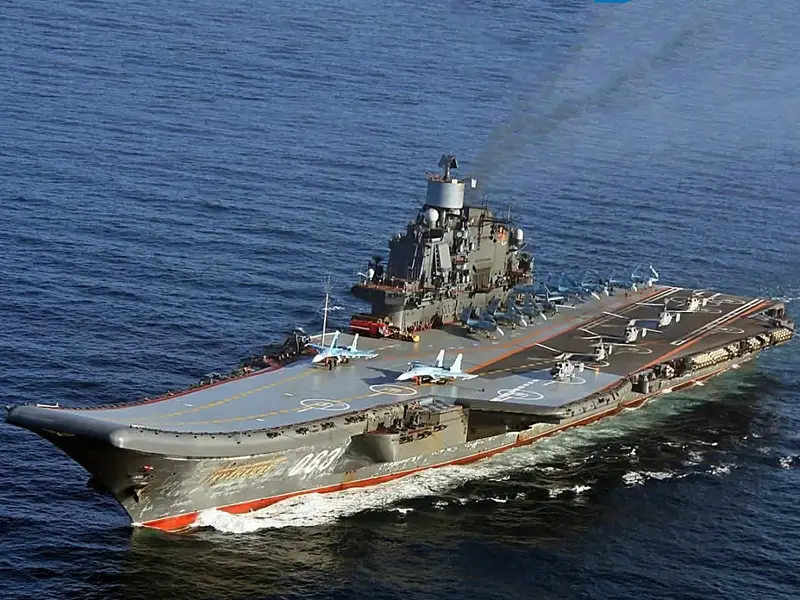
The Admiral Kuznetsov’s 14,700-square-meter flight deck can accommodate a variety of aircraft, including Su-33, MiG-29K, and Su-25UTG/UBP STOVL fighters, as well as Ka-27S, Ka-27LD32, and Ka-27PLO helicopters. The carrier can accommodate a crew of 1,960, along with 626 air group personnel and 40 flag staff.
Propelled by a steam turbine system, the Admiral Kuznetsov can reach a maximum speed of 32 knots. Its arsenal includes AK-630 AA guns, CADS-N-1 Kashtan CIWS, P-700 Granit anti-ship cruise missiles, and RBU-12000 UDAV-1 anti-submarine warfare rocket launchers.
14 Best Special Forces Uniforms Around The World
5. Fujian, China
Emerging as a rising naval power, China has made significant strides in the development of aircraft carriers. The latest addition to its fleet is the Fujian, the country’s third aircraft carrier, which was launched at the Jiangnan Shipyard in Shanghai on June 17, 2022.
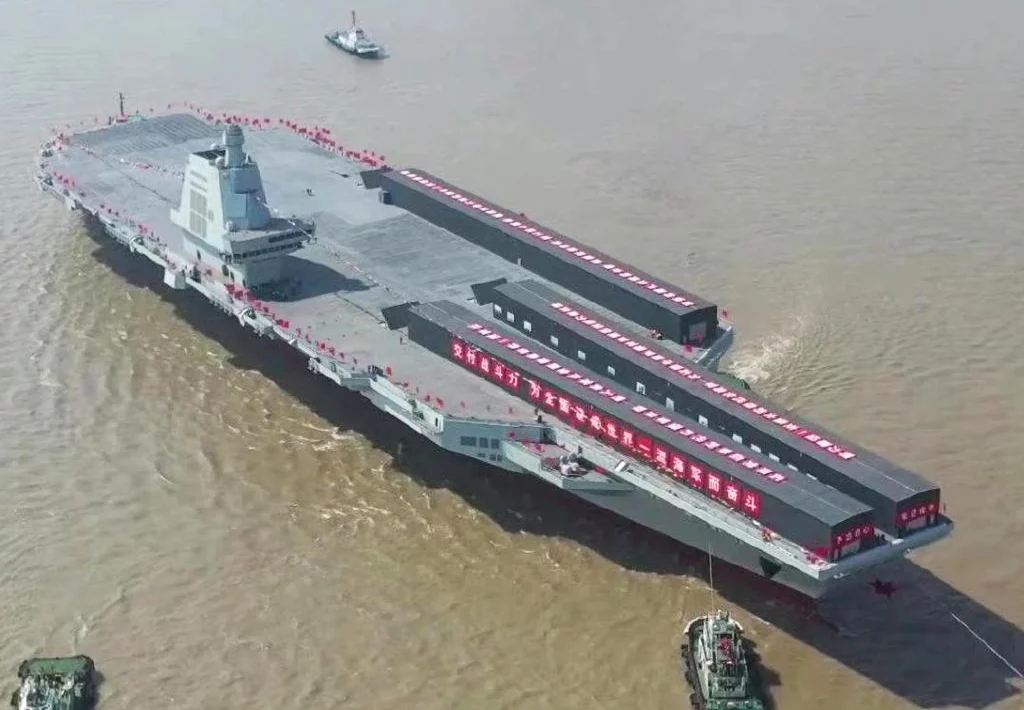
With a full-load displacement of more than 80,000 tons, the Fujian is expected to be China’s most advanced aircraft carrier to date. Notably, it will be the first Chinese carrier to employ an electromagnetic catapult system for launching aircraft, a departure from the ski-ramp launch systems used by the country’s previous carriers, Liaoning and Shandong.
Top 10 Toughest Exams in the World
6. Shandong, China
Commissioned into the People’s Liberation Army Navy (PLAN) in December 2019, the Shandong is China’s second aircraft carrier and its first domestically produced vessel of this class. Officially designated as the Type 002, the Shandong can displace between 66,000 and 70,000 tons.
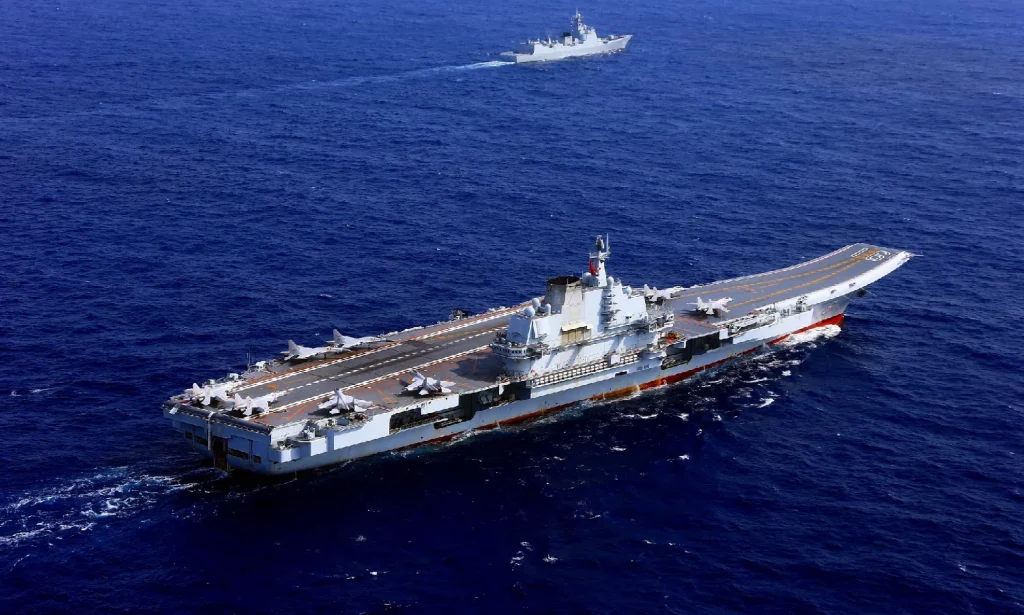
The Shandong features design improvements over China’s first aircraft carrier, the Liaoning, including a greater aircraft carrying capacity and an optimized superstructure design. The vessel underwent sea trials in 2020 to test its on-board weapons, equipment, and crew training.
7. Liaoning, China
Rounding out the list of the biggest aircraft carriers in the world is China’s Liaoning (16), the first aircraft carrier in service with the PLAN. Originally developed as part of the Admiral Kuznetsov-class for the Soviet Union, the Liaoning was previously known as Riga and Varyag.
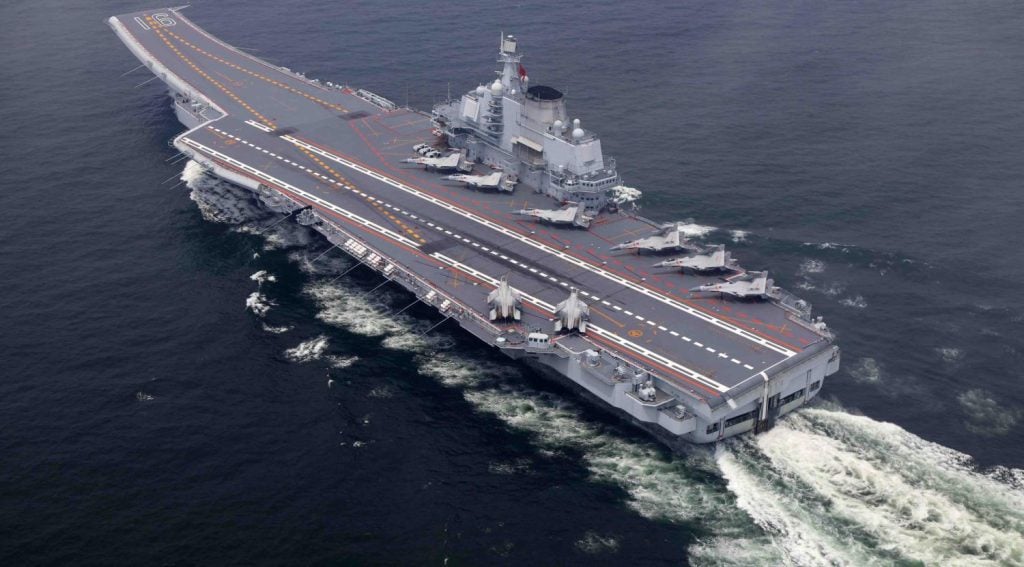
After the dissolution of the Soviet Union, the unfinished ship was acquired by China and refitted at the Dalian Shipyard to serve as an aircraft carrier. Liaoning was finally commissioned into service in September 2012, becoming China’s first operational carrier.
Displacing more than 58,000 tons at full load, the Liaoning is armed with Type 1030 CIWS, HQ-10 missiles, and anti-submarine warfare rocket launchers. Its steam turbine-powered propulsion system allows the vessel to accommodate approximately 50 fixed-wing and rotary-wing aircraft on its flight deck.
The Technological Evolution of Aircraft Carriers
As the world’s naval powers have raced to build ever-larger and more capable aircraft carriers, the technological advancements that have shaped these maritime giants are truly remarkable. From the introduction of nuclear propulsion to the integration of electromagnetic catapults and advanced arresting gear, the evolution of aircraft carrier design has been a testament to the ingenuity and engineering prowess of the global defense industry.
One of the most significant developments has been the shift towards nuclear power, which has enabled carriers to operate for extended periods without the need for refueling. The Nimitz-class and the Gerald R. Ford-class, both of which are powered by nuclear reactors, have set new standards for endurance and operational flexibility.
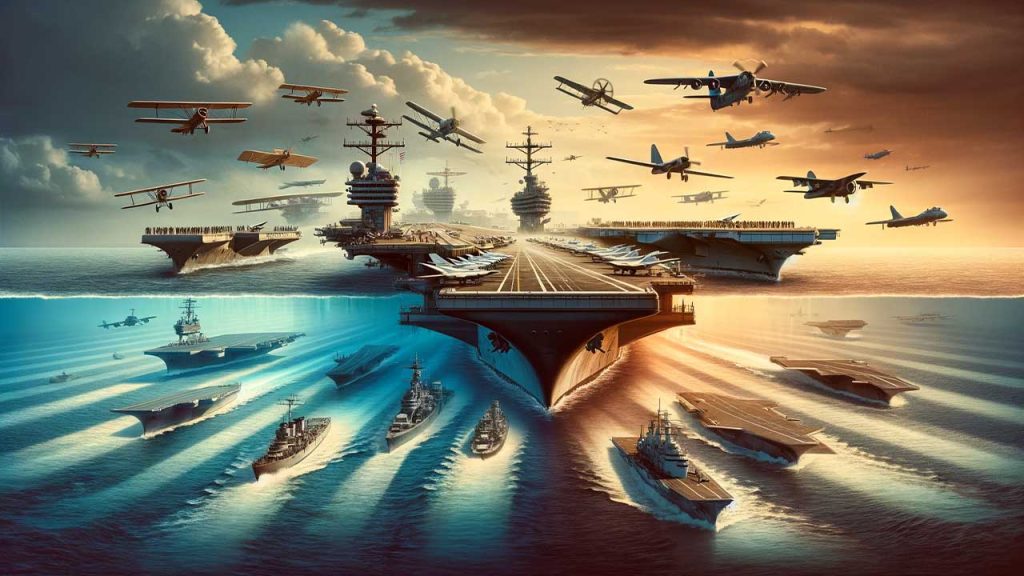
The integration of electromagnetic aircraft launch systems, as seen in the Gerald R. Ford-class and the upcoming Fujian, has revolutionized the way aircraft are catapulted from the deck. These systems offer greater efficiency and reliability compared to the traditional steam-powered catapults, allowing for the launch of heavier and more advanced aircraft.
Advancements in arresting gear technology have also played a crucial role in improving the safety and precision of aircraft recovery operations. The Gerald R. Ford-class features the Advanced Arresting Gear (AAG), which uses an electromagnetic system to capture landing aircraft, providing a more controlled and reliable landing process.
The incorporation of automation and advanced sensor systems has streamlined the operations of modern aircraft carriers, enabling them to be crewed by smaller, more efficient teams. This technological evolution has not only enhanced the carriers’ capabilities but also reduced the overall operating costs and manpower requirements.
As the global naval landscape continues to evolve, the competition for technological superiority in aircraft carrier design remains fierce. Nations are investing heavily in research and development to push the boundaries of what these maritime giants can achieve, ensuring that the biggest aircraft carriers in the world remain at the forefront of naval power projection.
The Geopolitical Significance of Aircraft Carriers
Aircraft carriers are not merely impressive feats of engineering; they are also powerful symbols of a nation’s military might and global influence. The possession of these colossal warships has become a hallmark of a country’s status as a major naval power, capable of projecting force and defending its interests across vast oceanic expanses.
For the United States, the world’s preeminent naval power, the aircraft carrier fleet has been a cornerstone of its global military strategy. The Nimitz-class and the Gerald R. Ford-class carriers have enabled the US to maintain a formidable presence in strategic regions, from the Pacific to the Middle East, and to respond swiftly to emerging crises and conflicts.
As other nations, such as China and Russia, have sought to bolster their naval capabilities, the race to build larger and more advanced aircraft carriers has taken on geopolitical significance. The launch of the Fujian, China’s most technologically sophisticated carrier to date, is seen as a direct challenge to American naval supremacy, underscoring the country’s ambitions to assert its influence in the Asia-Pacific region and beyond.
The acquisition of aircraft carriers by nations like India, the United Kingdom, and France further highlights the strategic importance of these vessels in the global balance of power. These carriers not only serve as symbols of national pride but also enable these countries to play a more active role in regional and international security operations, strengthening their diplomatic and military influence on the world stage.
The competition for aircraft carrier supremacy is not just about naval might; it is also about the projection of economic and technological prowess. The construction and maintenance of these colossal warships require significant financial resources, advanced engineering capabilities, and a robust defense industrial base. Nations that can successfully develop and field state-of-the-art aircraft carriers demonstrate their economic and technological prowess, further enhancing their global standing and influence.
As the world navigates an increasingly complex and volatile geopolitical landscape, the possession of the biggest and most capable aircraft carriers has become a crucial strategic asset. These maritime giants have become the centerpiece of modern naval warfare, serving as mobile command centers, power projection platforms, and symbols of a nation’s global reach and military might.
The Future of Aircraft Carrier Development
As the world’s naval powers continue to push the boundaries of aircraft carrier design and capabilities, the future of these colossal warships holds immense promise and potential. The ongoing race to build larger, more technologically advanced, and more efficient carriers is set to reshape the global maritime landscape in the coming decades.
One of the most exciting developments on the horizon is the emergence of the next generation of nuclear-powered aircraft carriers. Building on the success of the Nimitz-class and the Gerald R. Ford-class, these future carriers are poised to take naval power projection to unprecedented levels.
Innovations in propulsion systems, such as the use of advanced nuclear reactors, are expected to provide even greater endurance and operational flexibility. Advancements in electromagnetic catapult technology and arresting gear systems will enable the launch and recovery of increasingly sophisticated and heavier aircraft, further enhancing the carriers’ combat capabilities.
The integration of cutting-edge sensor suites, advanced command and control systems, and enhanced defensive capabilities will also be crucial in shaping the future of aircraft carrier design. These technological upgrades will not only improve the carriers’ operational effectiveness but also bolster their resilience against emerging threats, such as hypersonic missiles and swarming drone attacks.
As nations continue to invest in the development of these maritime behemoths, the competition for technological superiority is set to intensify. The race to build the biggest, most capable, and most advanced aircraft carriers will undoubtedly be a defining feature of the global naval landscape in the years to come.
The Importance of Aircraft Carrier Maintenance and Modernization
Maintaining and modernizing the world’s biggest aircraft carriers is a critical aspect of ensuring their continued operational readiness and effectiveness. These colossal warships, with their intricate systems and advanced technologies, require meticulous care and regular upgrades to keep pace with evolving military requirements and technological advancements.
The process of maintaining and modernizing aircraft carriers is a complex and resource-intensive endeavor, involving extensive overhaul and refitting efforts. For example, the Nimitz-class carriers in the US Navy undergo a mid-life refueling and complex overhaul (RCOH) that takes several years to complete. This comprehensive process not only refuels the nuclear reactors but also upgrades the vessels’ systems, enhances their capabilities, and extends their service life by an additional 25 years.
Similarly, the UK’s Queen Elizabeth-class carriers have also undergone extensive maintenance and modernization work to ensure their readiness for operational deployments. The first-in-class HMS Queen Elizabeth, for instance, completed a seven-month maiden deployment in 2021, demonstrating the importance of these ongoing efforts.
The companies that specialize in aircraft carrier maintenance and modernization, such as Huntington Ingalls Industries in the United States, play a pivotal role in sustaining the operational capabilities of these maritime giants. Their expertise in ship repair, maintenance, and system upgrades is crucial in enabling the world’s navies to keep their aircraft carriers at the forefront of naval power projection.
As the global competition for aircraft carrier supremacy intensifies, the ability to effectively maintain and modernize these colossal warships will become increasingly important. Nations that can ensure the long-term viability and continuous improvement of their aircraft carrier fleets will have a distinct advantage in the evolving Continuous maintenance and modernization efforts are essential to sustain the operational readiness of the world’s biggest aircraft carriers. Navies must invest significant resources to ensure these maritime giants remain capable of meeting evolving mission requirements and technological advancements.
Upgrading the electronic warfare suites, sensor systems, and defensive capabilities of aircraft carriers is crucial to enhancing their survivability in the face of emerging threats. Integrating new command and control systems, as well as improving data processing and connectivity, can significantly boost the carriers’ situational awareness and decision-making capabilities.
Additionally, regular overhauls and refits provide opportunities to enhance the flight deck operations, upgrade aircraft launch and recovery systems, and optimize the carrier’s overall efficiency. These modernization efforts not only extend the service life of the vessels but also improve their effectiveness in projecting naval power across the globe.
The logistical and engineering challenges involved in maintaining and modernizing aircraft carriers are immense. These colossal warships require vast maintenance facilities, skilled personnel, and specialized equipment to ensure their seamless operation. Navies must invest heavily in shipyards, repair depots, and training programs to develop the necessary expertise and infrastructure to support their aircraft carrier fleets.
As the competition for naval supremacy intensifies, the nations that can effectively maintain and continuously modernize their aircraft carriers will gain a distinct advantage. These efforts will not only enhance the operational capabilities of the carriers but also demonstrate a nation’s commitment to sustaining its maritime power projection capabilities in the long term.
The future of aircraft carrier development is poised to be shaped by the ability of navies to effectively maintain and upgrade their existing fleets, while also investing in the next generation of these maritime giants. As technology continues to evolve, the maintenance and modernization of aircraft carriers will become increasingly complex, requiring close collaboration between naval forces, defense industries, and research institutions.
